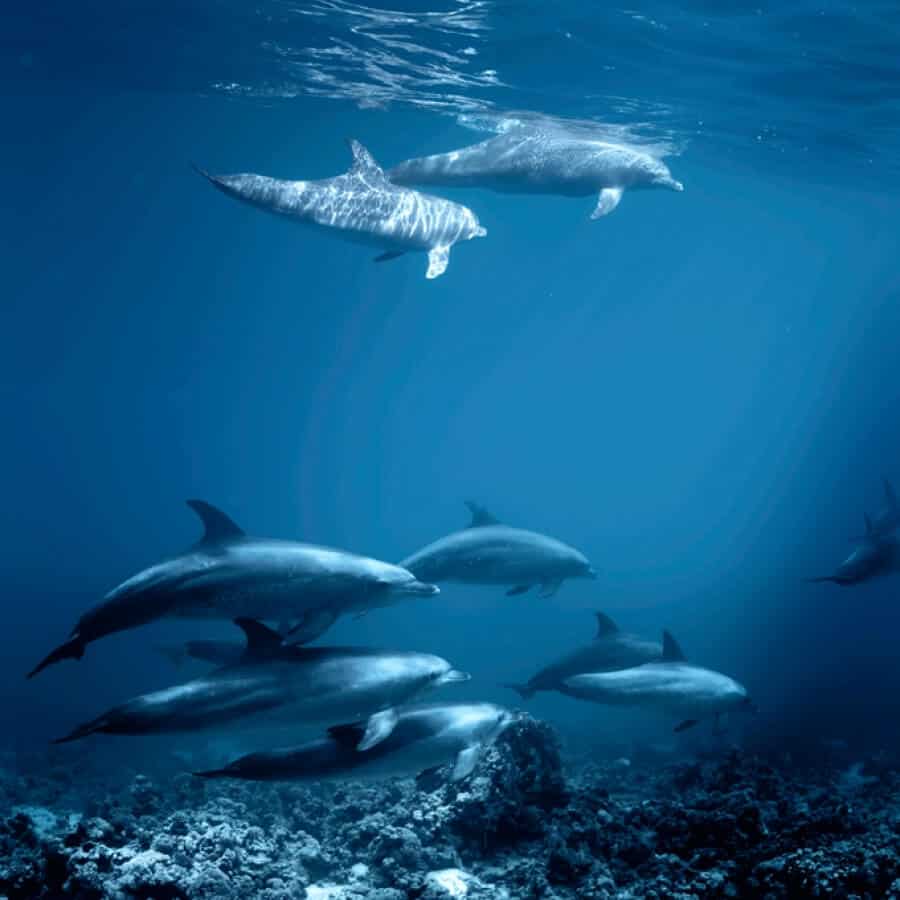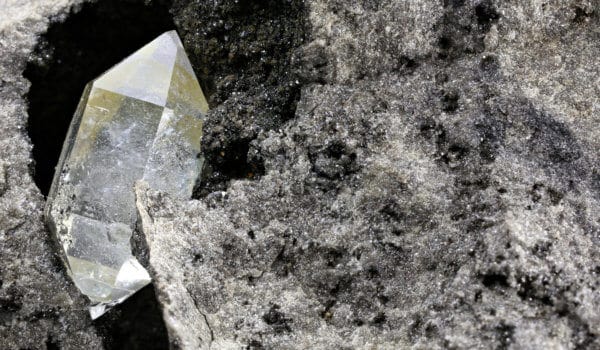In last week’s article in the Fantastic Beasts and Where to Find Them series, we stepped away from the dry lands of our planet and plunged into the rivers, seas and oceans that cover over 70% of the Earth’s surface.
With some of the most iconic shark species covered in the previous edition, this week we remain submerged in the watery ecosystems of this world and learn about another large family of aquatic animals – the cetaceans!
Comprised of a number of well-known families, including whales, dolphins, and porpoises, the cetaceans are a group of widely distributed marine mammals. Around 89 species are divided into two groups including the Odontoceti or toothed males, and the Mysticetior or baleen whales. Below, we take a deeper look at the most famous of them all and discover tips on where to best witness them in their natural environment.
Blue Whale

We’ll begin with arguably the most famous of all the whales – the Blue Whale. Not just the biggest of all cetaceans, but claiming the title of largest animal ever to inhabit our planet, the Blue Whale can reach enormous lengths of up to 30 metres and grow to weights of up to 180 tonnes! Due to commercial whaling, their numbers depleted significantly throughout the 19th and 20th centuries, but their population has steadily increased since being protected worldwide from 1966. The IUCN estimates the Blue Whale population at between 10,000 – 25,000 individuals – with the greatest number residing in Antarctica before whaling began. For excellent chances of observing these colossal beasts, head to Mirissa in Sri Lanka.
Sperm Whale

Reaching lengths of up to 20.5 meters, the Sperm Whale is the largest of the toothed whales and is considered to be the biggest true predator in the world today. A pelagic mammal, they have a worldwide ranges and will migrate seasonally for breeding and feeding purposes. Other impressive facts about these gigantic cetaceans include having the largest brain of all animals and being the second deepest diving mammal, second only to the Cuvier’s beaked whale. The species was once considered vulnerable to extinction as they were a prime target of the whaling industry for their spermaceti oil which was used for oil lamps, candles and lubricants. Their worldwide numbers are now estimated at anywhere from 200,000 to 1,500,000 individuals. Visit Iceland between May and August for the best chances of witnessing the gentle giants.
Humpback Whale

Most famous for their trademark breaches and other distinctive surface behaviors, Humpbacks are one of the most widely observed species during whale watching tours worldwide. Like the blue, fin, and right whales, Humpbacks are a species of baleen whale that feed mostly upon plankton and small crustaceans. They inhabit all major oceans with four global populations found in the North Pacific, Indian, Southern, and Atlantic Oceans. There are believed to be 30,000 – 40,000 Humpback Whales left in the world, making up around 30% of their original population. Saguenay – St. Lawrence Marine Park in Québec is a great place for Humpback Whale watching tours, but if you want to get a little closer and try swimming with them then head to Silver Bank in the Dominican Republic.
Southern Right Whale

One of three species classified as right whales (along with the North Atlantic Right Whale and North Pacific Right Whale), the Southern Right Whale is the most abundant in the family with up to 10,000 individuals roaming the waters of the southern hemisphere. They are one of the whale species that are highly active on the water surface and demonstrate a natural curiosity toward human vessels making the Southern Right Whale one of the most popular of all species during whale watching tours. Hermanus in South Africa is known as the mecca for spotting Southern Right Whales, an area which they migrate toward during the winter months between June and October
Fin Whale

The second largest of all the cetaceans and animal species in general is the Fin Whale. They can be found in all the major oceans, with the highest population density occurring in cool and temperate waters. With an estimated 100,000 individuals left, they have been listed as an endangered species by IUCN. Despite the International Whaling Commission (IWC) issuing a moratorium on commercial hunting of the Fin Whale along with many other whale species, they are still often hunted in Iceland and Japan, which has contributed to their slower recovery rates. Regular encounters with Fin Whales occur on whale watching tours across the globe. They can be encountered year-round in the Southern California Bight and be seen inshore from June to February in southern Ireland.
Narwhal

Nicknamed the “Unicorn of the sea”, the legendary Narwhal is a pale-colored porpoise with a distinctive spiraled ivory tusk and can be found only in Arctic coastal waters and rivers. Though females do sometimes grow a small tusk of their own, it is the male’s which grow the most prominent – reaching lengths of up to 8.8 feet. The purpose of the tusk eludes scientists to this day, but common theories include its use to impress females and to battle rival suitors. Narwhals typically travel in groups of 15-20, but gatherings of hundreds and in some cases, several thousands have been reported. Divided into around 12 subpopulations, Narwhals are thought to number at around 50,000 – 170,000 individuals. To spot them in their natural environment, head to Arctic Bay- a Hamlet in Baffin Island, Canada.
Beluga

Also known as melonhead or sea canary (due to its high-pitched twitter), the Beluga is closely related to the previously listed narwhal. With an all-white coloration and an echolocation organ situated within the protuberance at the front of its head, the Beluga is well adapted to life in the Arctic. Male Belugas can grow up to 18 feet long, making their body size somewhere between that of a dolphin’s and a true whale’s. They occur broadly in Arctic and Subarctic waters using a diverse range of habitats. The Beluga population is estimated at around 200,000 individuals, divided into 21 separate populations. Churchill, a town located on Hudson Bay in Canada is a popular hotspot for viewing and even swimming with Beluga.
Orca

More commonly known as the killer whale and often referred to as “Wolves of the seas”, Orca are one of the most distinctive of all cetaceans. Despite their name, they belong to the oceanic dolphin family, of which they are the largest member. Orcas are considered the most cosmopolitan of all cetaceans, inhabiting a wide variety of marine environments from Polar Regions to tropical seas. A highly social species, they are well documented for their sophisticated hunting techniques and vocal behaviors. In fact, their behaviors differ greatly between groups and are passed on through generations, leading scientists to describe the phenomenon as a manifestation of animal culture. Due to the likelihood that two or more Orca types can be considered separate species, the IUCN lists the species conservation status as data deficient. Caleta Valdes, Punta Delgada and Punta Norte in Patagonia, Argentina are among the few places in the world to witness the particular Orcas which approach the shore to hunt seals. For more reliable viewings, however, head to the lively village of Grundarfjörður in Iceland.
Amazon River Dolphin

The only freshwater species on this list, the Amazon River Dolphin or Boto can be found swimming through the Amazon River Basin of Brazil, Peru, Ecuador and Bolivia and the Orinoco River Basin of Colombia and Venezuela. Due to limited amount of information on population numbers and trends, in addition to little knowledge on threats and ecology, the Amazon River Dolphin’s conservation status is listed as data deficient by IUCN. These pink-colored cetaceans are one of just five dolphins that make their homes in the rivers of this world. The friendly and highly social Amazon River Dolphin is also considered the most intelligent of the river dwelling cetaceans, with a brain capacity 40% larger than that of humans. Population estimates are highly unreliable for this species, but a good place to see them in larger numbers is the Pañacocha Lagoon in the vicinity of the Yasuni National Park, Ecuador.
Common Bottlenose Dolphin

The most familiar of all dolphin species, the Common Bottlenose Dolphin is the largest of all the beaked dolphins and number at around 600,000 individuals worldwide. Absent only from the icy polar waters of the Arctic and Antarctica, they mostly inhabit temperate and tropical oceans throughout the world. They typically lives in pods numbering around 15 individuals, but have been observed swimming together in groups of over 100, and occasionally 1000 animals in what are known as super pods. Monkey Mia, located on the west coast of Australia is known as one of the most reliable places to observe Common Bottlenose Dolphins in their natural habitat. In fact, the friendly pod are well-known for visiting the beach on a daily basis where they regularly interact with humans.
Photos: Shutterstock / Graphic Design: Leigh Woods
Support us!
All your donations will be used to pay the magazine’s journalists and to support the ongoing costs of maintaining the site.
Share this post
Interested in co-operating with us?
We are open to co-operation from writers and businesses alike. You can reach us on our email at cooperations@youthtimemag.com/magazine@youthtimemag.com and we will get back to you as quick as we can.









